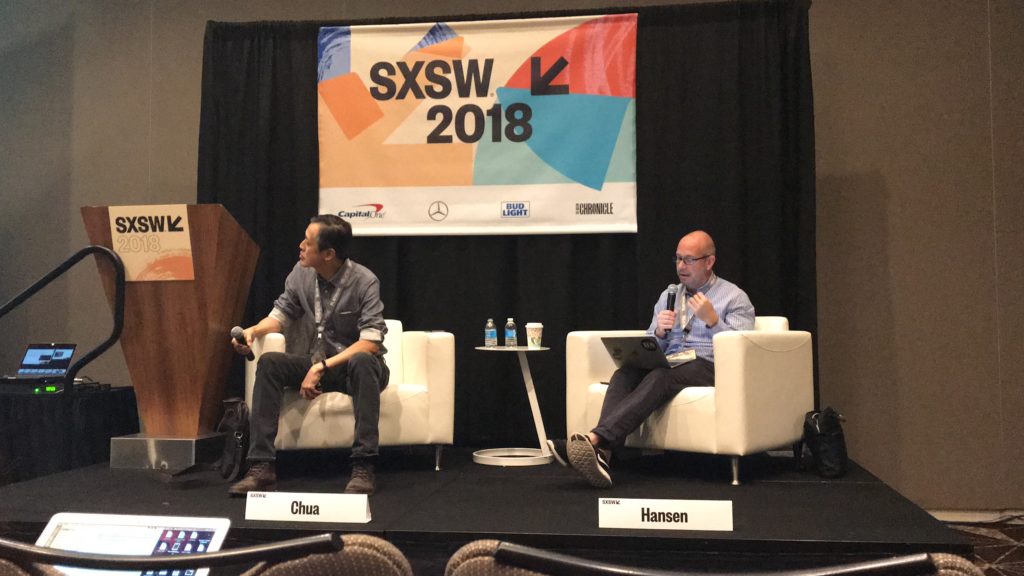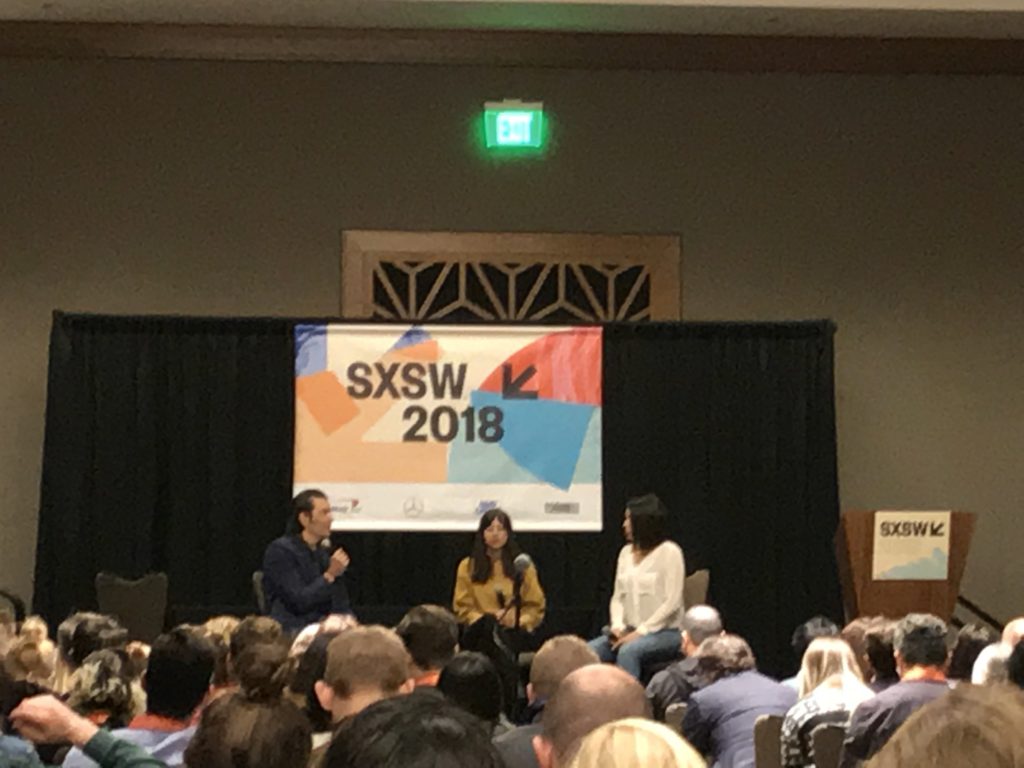As the fourth day of SXSW kicked off, I can feel the drain of the last three days catching up to me, but that didn’t stop me from attending three awesome panels today! I started my morning off by checking out the “Finding Signal in the Noise of Social Media” conducted by Dr. Mark Hansen and Reg Chua.
Since the rapid increase of smartphones and social media, there are many more eyewitness accounts of events than ever before, so how do we know what is true and what isn’t? This panel helped to provide insightful ways for consumers to critically think about how and where we get our news.
In 2016, social media was the “most important” source of news pertaining to the election with 14% of U.S. adults saying that is where their primary news comes from. For college students, the article placement in search results was the most important factor when deciphering whether an article is credible or not, not the origin or author. This is frightening due to the fake news epidemic that we’ve recently found ourselves in.
Reg Chua described the period of time we are in as the “post truth age,” which is plagued by consumers who are worried about fake news becoming the new weapon.
Due to the influx of information overload, this has caused “information exhaustion,” which contributes to a lack of critical thinking when reading articles for many consumers.
At Reuters, Reg Chua says they are doing as much as they can to combat against this by developing a fact checker to help consumers ensure the articles they are reading is a credible source. However, one of the biggest problems with fact checker is they aren’t instantaneously. Hansen explains how “untruthful or novelty stories take off much faster than truthful stories.” Therefore, once an untruth article starts to trend, there is really no stopping it.
Dr. Mark Hansen talked on what makes some content “trend” and others not. He explains how algorithms look for spontaneous spikes, as opposed to a gradual increase in presence. This means that regardless if something is true or not, if the algorithm sees a spike it will automatically promote this content whereby displaying this content to so many more people.
After attending this panel, I was able to make it to the “Designers Who Broke the Internet” led by John S Couch from Hulu, Tina Koyama from Twitter and Jill Nussbaum from Instagram. The panel discussed the implications of being a designer in a constantly evolving and company. Everything from their process, what they are working on as a company, and how they deal with new product rollouts.
When developing a new product or service, they emphasized the importance of research in their processes. Both Nussbaum and Couch described their companies use of prototyping and user testing throughout their developmental process. John S Couch explains the importance of user testing in the design process. He says, “designers want to get to the end point right away. we can go from point a to d, but we cant forget about c. Help your user step across the chasm when introducing new thinking.”
When discussing how each company deals with feedback after launching new products or redesigns, John S Couch offered this advice for companies, “don’t over index on the very negative or the very positive, because neither are the truth. The truth is somewhere in the middle.” Both Nassbaum and Koyama, agreed that sitting down employees to prepare them for both negative and positive feedback was a must.
They also talked on the collaborative environment their companies have cultivated within their company. Koyama touched on her focus of closing the gap between engineers and designers by organizing them with a system to make the overall design process a more seamless and collaborative process. However, all seemed to agree that incorporating all departments from the beginning to the end of the project helped in building a culture of camaraderie, as well as brand continuity.
I was also able to go to the “The Quirky Black Lunch Table: Why You Need A Seat” panel which focused on the underserved minority population that marketers seem to forget about. Panelist included Jacque Amadi of Adorned By Chi, Alana Ladson and Bryanda Law of Quirktastic Media.
Law discussed the missed opportunity many marketers seem to make time and time again. She says, “because black and hispanic communities are either overlooked or felt like an after that who yearning for attention, so when we get it there is a big profit to be made.”
However, many brands who do target these specific minority groups are only reaching out to a specific misrepresented stereotypes and not just reaching out to these groups during Black History Month.
In the U.S. alone there are 43 million “quirky” blacks and latinas with a $4 billion dollar buying power. This is not a group that should be overlooked anymore!



